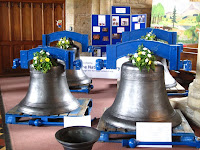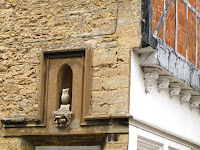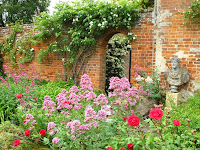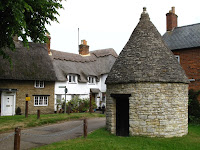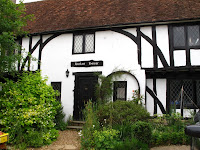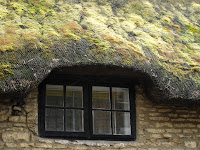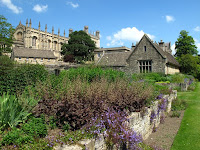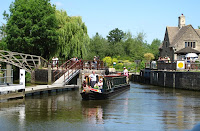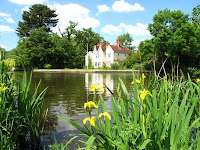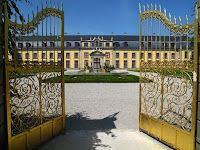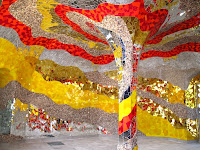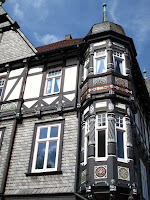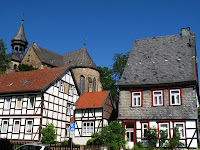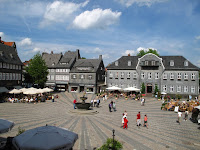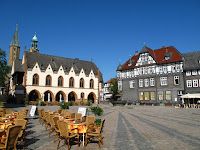

These gardens, attached to a garden centre, have extensive borders, which will look stunning in a few weeks time. They still looked colourful today, and we were able to enjoy the wild and free growing roses. The most attractive section was the formal garden.


Blenheim Palace is not far from here, and their rose gardens were stunning. Blenheim Palace is a UNESCO World Heritage site, and last year their gardens won the Christies' Garden of the Year award: both awards are well deserved. There is a variety of gardens – water gardens, formal gardens, rose gardens and a very charming secret garden; all looked stunning today.
 In addition to the state rooms, the house now has a synopsis of the life of the house, from the time the foundation stone was laid to now. It was extremely well done, with various techniques, such as animated models who 'spoke' into mirrors. It was promoted as the 'untold story', which introduced us to some of the past faces at Blenheim.
In addition to the state rooms, the house now has a synopsis of the life of the house, from the time the foundation stone was laid to now. It was extremely well done, with various techniques, such as animated models who 'spoke' into mirrors. It was promoted as the 'untold story', which introduced us to some of the past faces at Blenheim. Equally interesting was the parallel stories of the military career of the first Duke – John Churchill, and the more modern day leader, Winstone Churchill.
Equally interesting was the parallel stories of the military career of the first Duke – John Churchill, and the more modern day leader, Winstone Churchill. It's easy to spend a whole day at Blenheim Palace but we reserved enough time for a picnic at Minster Lovell ruins, before heading home.
It's easy to spend a whole day at Blenheim Palace but we reserved enough time for a picnic at Minster Lovell ruins, before heading home.






